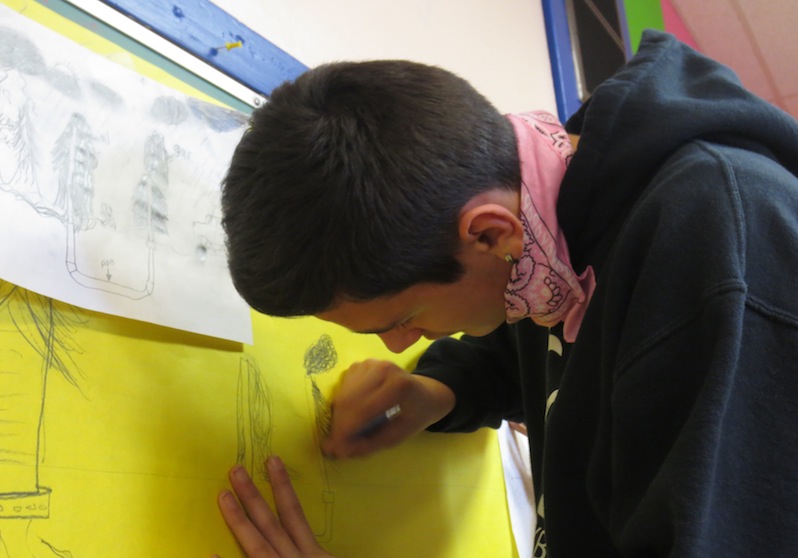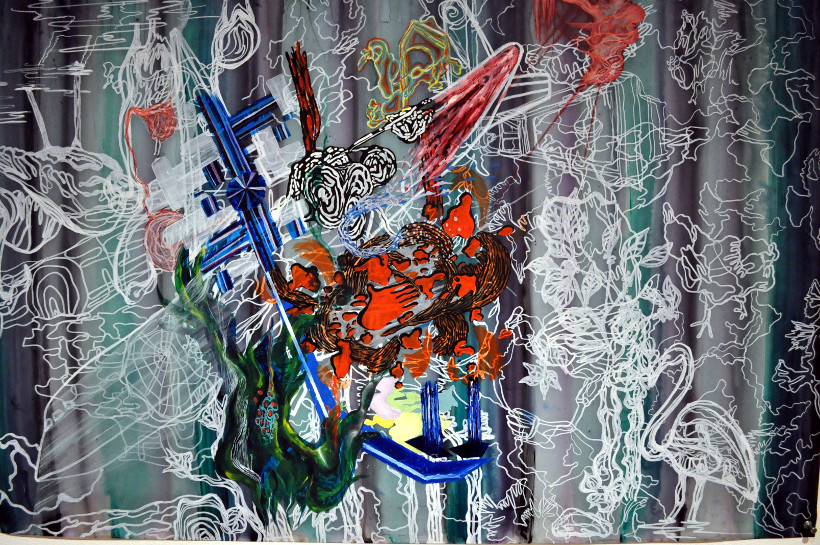Change and Continuity
Social Studies - Grade 4
This unit of inquiry is not a recipe book but rather a launchpad to inspire new BIG IDEAS. We encourage you to use and/or modify one, or several of the BIG IDEAS below. Adapt it to the grade/ ability level of your students.
Enduring Understanding
Respectful interactions lead to positive change
Guiding Questions
What can I do to respect the environment and foster equilibrium?
Mind Opening
Choose or devise practices to encourage students to be open to new experiences and ways of thinking in your classroom. For example, the MindUP in-school program.
Discovery and Inspiration:
Launch the Project
• Introduce the Theme: Present the Enduring Understanding and Guiding Questions using vocabulary that is appropriate for your grade level.
• About Vancouver Biennale: Play a short video.
• Create Project Space: Brainstorm ideas to make the project theme visual and visible using bulletin boards, and/or a project corner to share relevant materials and inquiry questions and processes.
Reference Resources:
• Introduction to Sculpture and Public Art Unit Plan for information on how art has evolved over time and the unique experience sculptures and/or public art brings.
• Vancouver Biennale 2014-2016 Exhibition Theme: Open Borders / Crossroads Vancouver
• Vancouver Biennale Legacy: 217.5 x 13 Arc (Bernar Venet, France)
• About Artist and Artwork (PDF)
Other Resources
UNESCO World Heritage Convention Website: View SGang Gwaay Video
Learning to Learn:
Art Inquiry
Visit 217.5 x 13 Arc and encourage students to freely explore and interact with the art pieces individually and in groups. This Art Inquiry process enables the students to practice observing, describing, interpreting, and sharing visual information and personal experiences. Use the Art Inquiry Worksheet (PDF) to guide and capture their ideas and impressions. Customize or create your own Art Inquiry Worksheet as appropriate for your project and class needs.
BIG IDEAS Anywhere educators: View the 217.5 x 13 Arc Guided Tour Video MUTE ON and encourage students to explore at different angles individually and in groups.
Shared Insights
• Sharing Art Inquiry Experience: Ask students to share the Art Inquiry Worksheet responses in class.
• View Guided Tour Video: View the 217.5 x 13 Arc Guided Tour Video again with SOUND ON.
• Artist Themes – Research: In small groups students rotate between information stations detailing the artist’s life and work. Station topics include: (1) education and training; (2) lifetime of artwork; (2) materials and processes; (3) beliefs and values. At each station, students answer questions and complete a task. For example, at the station “life’s work” students might plot the artist’s various installations on a map of the world.
• Artist Themes – Equilibrium: Have students reflect on the relationship between each arc in 217.5 x 13 Arc . Are they finding a balance and equilibrium? Does the sculpture suit or challenge the environment around it? Facilitate a discussion on the challenges of finding balance and equilibrium in personal relationships and our relationship with the environment around us.
• Changes and Transitions: Facilitate the following discussion relating to the guiding question:
500 Years Ago – Imagine sitting in a First Nations fishing village. What were peoples’ lifestyles like? What would you hear around you? Where would you have lived? How would you use the environment to help meet your needs? In your opinion, was life simpler or more complex?
500 Years Forward – Will you hear the same sounds? Will they change? What will your lifestyle be like? Will things still taste the same? Will things still feel the same? Will the environment be healthy for our bodies? Will the place you are sitting even exist?
Today – Vancouver is constantly changing. Today, the land here is a man-made beach along one of the most popular tourist destinations in British Columbia and yet it is also home to a diverse ecosystem. Identify as many things as possible that are occurring in this space that could place your future at risk.
Encourage students to be mindful of responses, for example, the sewage pipe opening into the ocean is dangerous because it will affect the ecosystems in the ocean such as fish. This inquiry can be done through Google Map photos if a field trip is not feasible.
Inquiry Challenges
Explain the issue: maintaining ‘green spaces’ within any major city has always been a challenge. This is because ‘green spaces’ hold major potential to be developed into condos, businesses, etc.
Imagine the City of Vancouver has just announced that they are thinking of developing English Bay and Stanley Park for condos/businesses. Divide class into groups and assume roles to protect your interest as follows:
Mediator – the mediator will facilitate the ‘artistic’ conversation between the parties
Conservationist Environmentalist – wants the area preserved for plants and wildlife
Tourism and Adventure Company – wants the area devoted to recreation sports i.e. kayaking, cycling, tennis, etc.
Municipal Business Association – wants to build a small shopping district with a convenience store, gas station, Laundromat etc. to serve increasing population
Urban Development Company – wants to build state of the art condos with a view
Students can communicate through visual presentation or verbal debate.
Student Creations and Taking Action
Students and teachers decide on medium and methods to communicate their insights on how equilibrium can be achieved. Consider use of posters, websites, montages, written essays/poems, film and audio, dance, visual arts or theatre.
Students can decide on individual or group projects to promote their learning to the broader community for long-term influence. The focus being students as learners and communicators, to engage with an audience to get feedback, and ideally, the action is propelled even further.
Reflection
• Teacher and students can reflect on their entire learning process by revisiting the Enduring Understanding and relevant Guiding Questions.
• How did the unit of study open inquiry, create cross–curricular learning opportunities and/or apply learning to real life situations? Has this unit of inquiry changed your opinions, values and world view? In what ways, if any, has it helped you grow as a learner?
Ideas for Cross-Curricular Access
• Arts Education (Drama): Create and perform a play from the content and messages developed during the classroom debate.
• Arts Education (Visual Arts): Create visual art drawings based on the mathematics inquiry challenge.
• Language Arts: Transform the messages from the debate into a written format such as poetry, essay.
• Mathematics: Using a West End Google street map, measure individual areas of residential neighbourhood land, park space, business development and public space like schools and community centres. Calculate and estimate each area and compute the total areas by land use.
Credits
Terry Howe, Curriculum Consultant and School Principal (Retired 2009)
Contributor: Katherine Tong, Vancouver Biennale Education Program Director
©2013 Vancouver Biennale
Related Material
 Kitsilano Secondary
Kitsilano Secondary